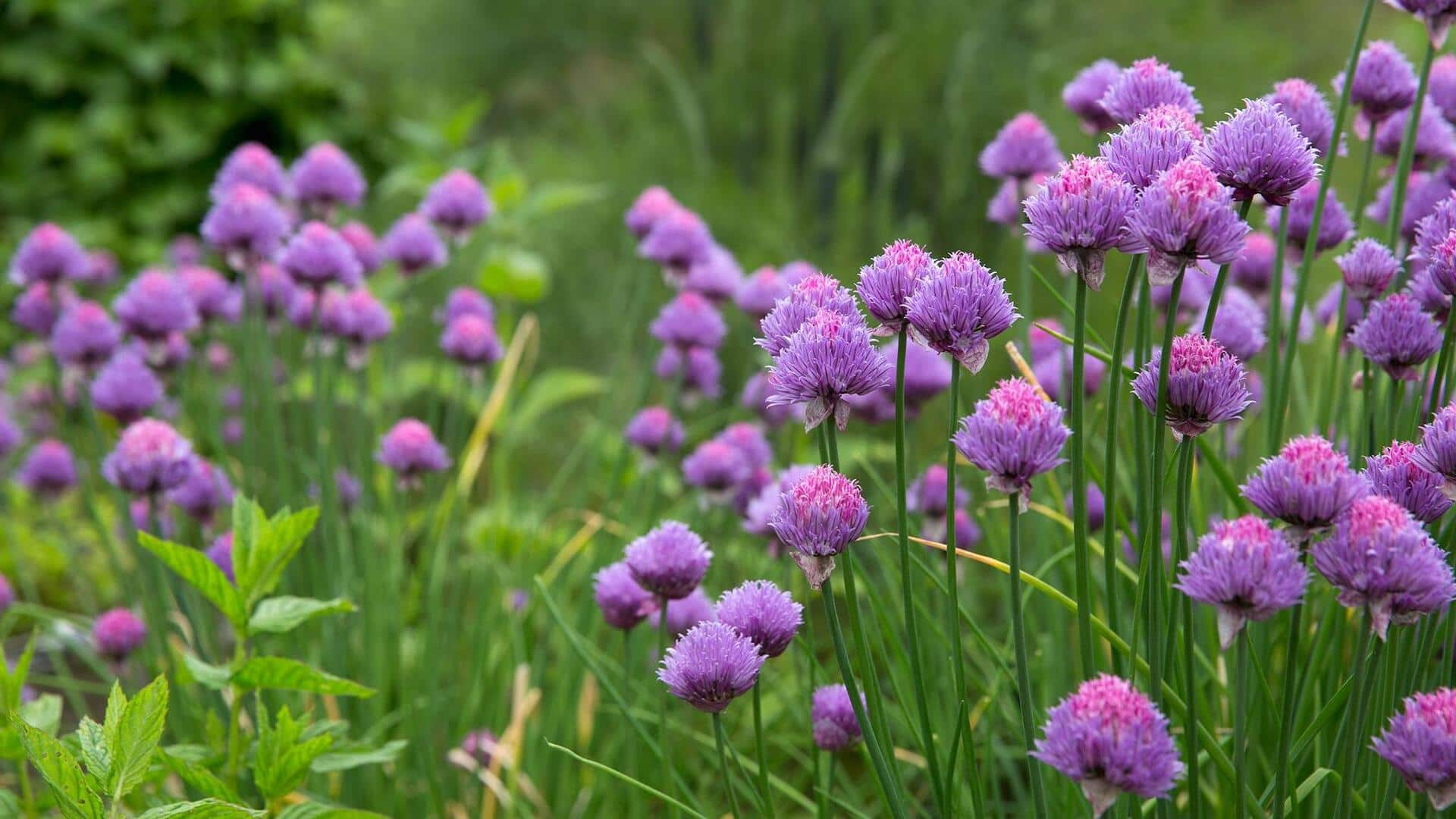
How to grow chives at home
What's the story
If you're looking for a practical way to enhance your kitchen flavors, you can try growing chives indoors. Hardy, easy to grow, and requiring little space, these herbs make a great choice for an indoor garden. With a mild onion-like taste, chives can liven up the most boring of dishes. Here's everything you need to know about growing chives indoors, from choosing a pot to care.
Tip 1
Choosing the right container
Selecting an appropriate container is crucial for growing chives indoors. Opt for pots that are at least six inches deep with drainage holes at the bottom. This way excess water can escape, preventing root rot. Clay or ceramic pots are ideal as they allow air circulation around the roots. Ensure each pot has a saucer underneath to catch any draining water.
Tip 2
Ensuring proper soil mix
Chives flourish in well-draining soil with good organic content. Use a potting mix containing perlite or sand for better drainage. Adding compost or aged manure can also provide essential nutrients required for growth. Avoid garden soil as it may compact in containers, restricting the roots' development and leading to unhealthy plants.
Tip 3
Providing adequate light
Chives need plenty of sunlight to flourish indoors. You can keep your pots on a windowsill where they get at least six hours of direct sunlight every day. If natural light isn't adequate, you can use fluorescent grow lights placed some six inches above the plants for the best growth conditions.
Tip 4
Watering and fertilizing tips
Watering should be done carefully; keep the soil consistently moist but not waterlogged. Overwatering can lead to root rot while underwatering may cause wilting and stunted growth. Fertilize every four weeks with a balanced liquid fertilizer diluted to half strength during active growth periods in spring and summer months.
Tip 5
Harvesting techniques
Harvest chives by snipping leaves close to their base with sharp scissors when they reach about six inches tall. This encourages new growth without significantly damaging existing plants over time, if done correctly. Regularly do this throughout seasons when needed most. Frequently used recipes calling for fresh herbs like these versatile ones are often found in kitchens worldwide today.